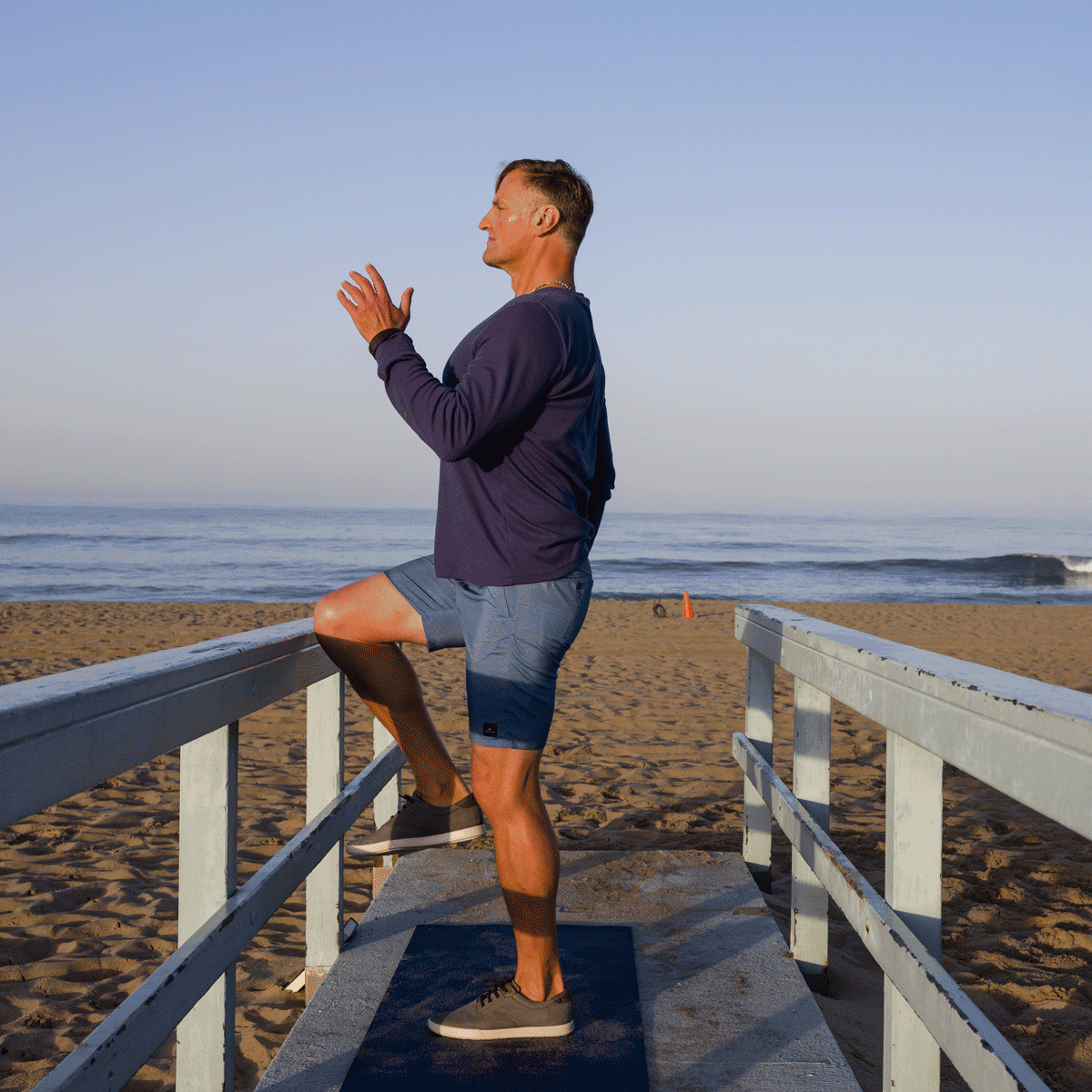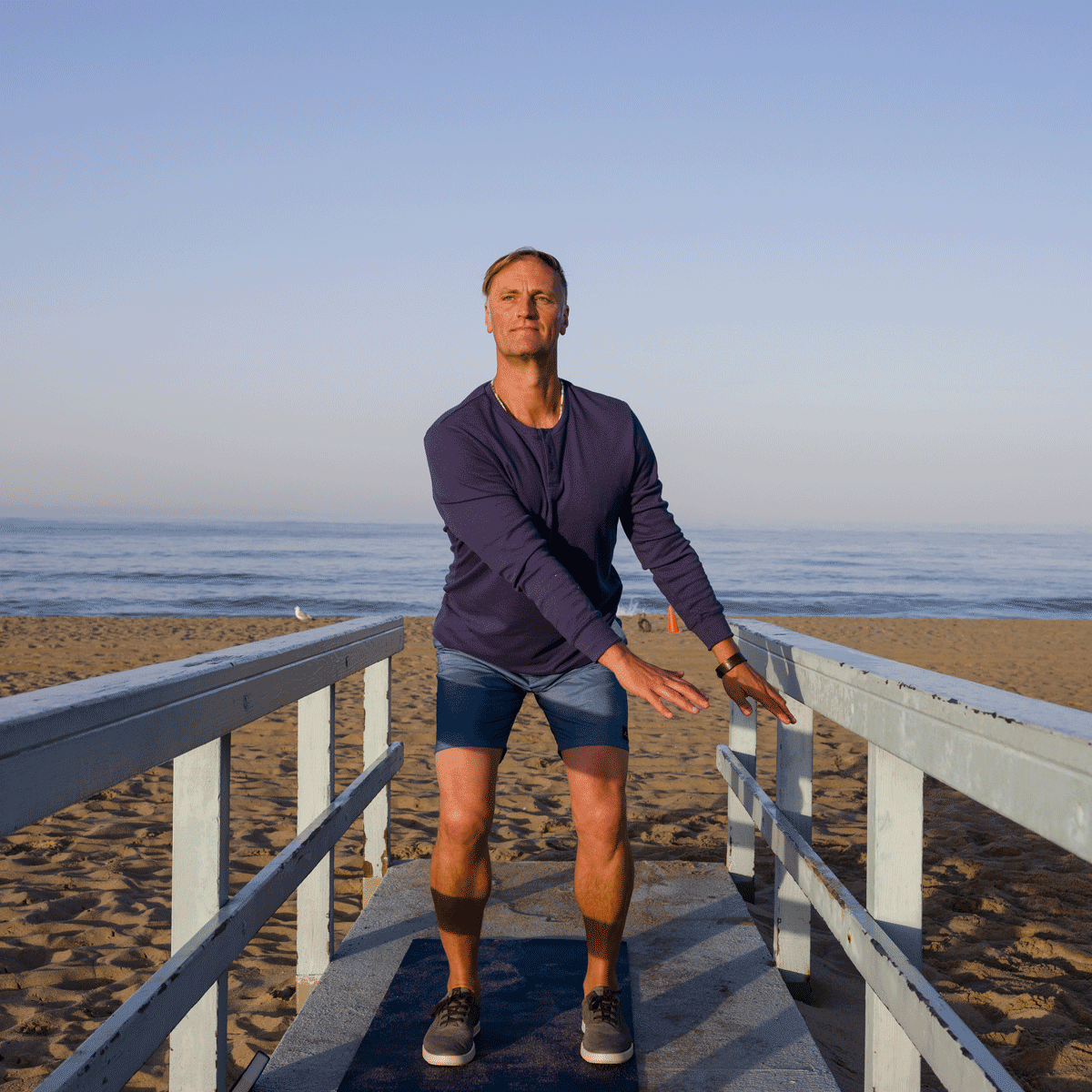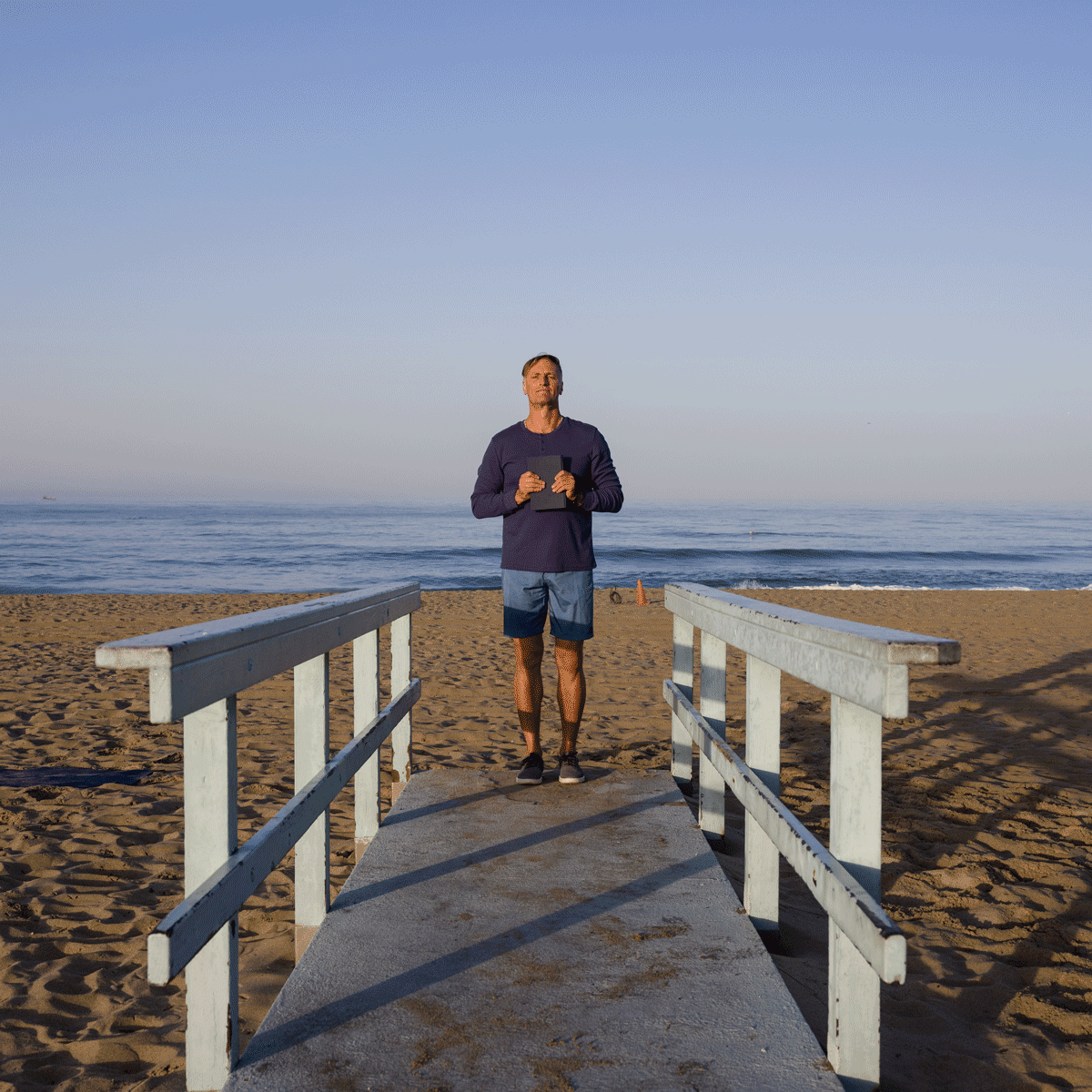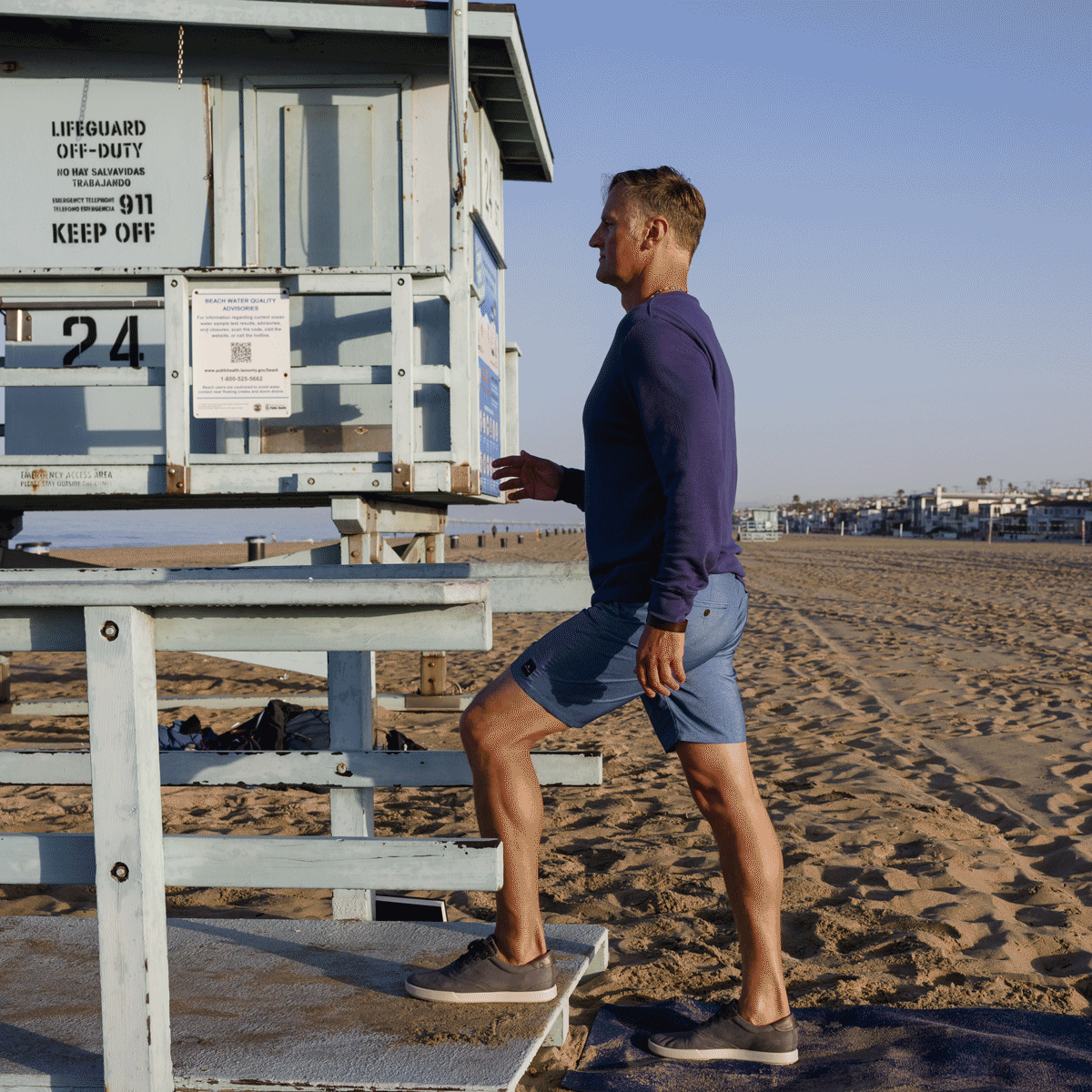Figure skaters combine power and grace to execute feats of physics like the triple axel, a 3½-rotation move where the athlete lands backward on the opposite foot.
“It’s like a professional basketball player taking off on one foot then rotating in the air to dunk a ball and land the other foot on ice while wearing a sneaker attached to a 5 millimeter-thick blade,” says Benoit Duboscq, a Redondo Beach, Calif.-based sports-performance consultant with U.S. Figure Skating and the United States Olympic Committee.
“Skaters need a solid foot and ankle foundation to be efficient in their movement,” says Mr. Duboscq, who has coached Olympians including Michelle Kwan and Evan Lysacek. “Think of it like a house. The stronger its foundation, the better its core and roof will resist the storm. The stronger and more flexible the ankle joint is, the more it will act as a shock absorber for the skater’s knees, hips and spine.”
Join The Wall Street Journal Fitness Challenge

Try this six-week program of exercises designed by an NBA sports performance coach for all skill levels that can be done almost anywhere, and delivered to your email inbox.
As we move, the foot is the first part of the body to hit the ground, whether landing on ice or stepping onto the sidewalk. Having a good amount of flexibility in the ankle joint to reduce the impact when we make contact with the ground is extremely important, he says.
“A good warm-up will lubricate, activate and prepare our calf muscles and ankle joints for acceleration and deceleration in order to minimize the impact,” he says. This workout will not only strengthen and activate your ankle joints, but also your hips and core muscles. This can also be done as a warm up or cool down.
THE WORKOUT
Ankle Squat
Why: If you find your heels lifting off the ground when you perform a squat, it’s most likely because your ankles can’t flex enough, says Mr. Duboscq. This variation of a squat will work ankle strength and mobility.
How: Stand with your toes 1 inch away from a wall. Keep your arms by your sides, palms facing straight ahead. Instead of sinking your hips down and back, as you would in a normal squat, think of driving your ankles forward so that your knees touch the wall, or come as close as possible without your heels lifting off the ground. This will not be a big movement. Avoid the knees knocking inward. Repeat 10 to 20 times.
Toe-to-Heel Raises
Why: Plantar flexion, the movement we use to take a step forward or push down on the gas pedal of our car, occurs when the toes point downward and the heel rises. “When we were babies, we spent a lot of time on our toes, but as we age we lose our ability to plantar flex our foot,” says Mr. Duboscq. The more range of movement we have in our ankles to point and flex the foot, the less impact and energy will be dissipated through our knees, hips and back, he says.
How: Stand tall with both feet parallel and hips-width apart. Flex your toes off the ground, back toward your shins. Hold two counts. Lower the toes down and push through the balls of your feet to lift the heels off the ground in a calf raise. Hold for a count of two. Try to maintain a tall spine the entire time. Repeat 10 times.
Options: Hold on to a wall or chair to help with balance. To progress, perform on a single leg.
Single-Leg Balance Reach With Triple Extension
Why: When we walk, run and jump, we need to extend three major joints in the body: the ankles, knees and hips. As speed increases, we need more control and strength in these joints, he says. Working to improve balance, stability and ankle proprioception, our joints’ ability to detect where you are in space and improve reaction time, will help prevent ankle injuries, like sprains, he says.
How: Balance on your left foot. Lift your right foot like you are going up a big step. Your knee will bend at 90 degrees. Flex your toes upward and hold one to three seconds. Slowly extend the leg down behind you so your toe taps the floor behind your standing leg. “It should feel like you are running in slow motion,” he says. “You can pump your arms for better balance. Bring the opposite arm up as you raise your knee.” Repeat six to 10 times on each leg.
Options: Hold on to a wall or chair for better balance.

Mr. Duboscq demonstrates a single leg balance reach that works triple extension of the ankles, knees and hips.
Standing PNF Rotation
Why: “Twisting and rotating are basic human movements,” says Mr. Duboscq. “As we get older, we lose mobility in our hips, knees and spine. The more movement we can get from our hips and middle spine when we twist, the less stress we put on our neck, low back and knees.” This Proprioceptive Neuromuscular Facilitation (PNF) exercise—a dynamic form of flexibility training—will lubricate the spine and engage the oblique muscles, he says.
How: Stand with your feet parallel and hips-width apart. Gently bend your knees and put your weight in your heels. Rest your left hand by your left side and move the right hand across the body to meet it. Slowly pivot onto the left foot as you bring both hands up and across the body to the upper-right side above the head. Your body should form a diagonal line from hands to left foot. Slowly bring the hands and left foot down to the starting position. The motion is similar to a golf swing or a reverse wood chop. Repeat 10 times on each side.
Option: Hold a water bottle or kettlebell for an added challenge.

Mr. Duboscq performs a standing PNF rotation.
Single-Leg Balance Hold to Walk
Why: As we move, the foot and ankle need to be able to twist inward and outward and the hips need internal and external rotation, says Mr. Duboscq. “Whenever there is some lack of mobility in the foot and hips, that will affect the knee joint and your back as well,” he says. This exercise will help build strength and mobility in your hips and ankles.
How: Balance on your left foot with your right leg raised and bent at 90 degrees. Hold this position for two to three seconds, then step forward and raise the left leg and hold for two to three seconds. Complete 10 steps on each foot in a fluid, walking motion. Concentrate on keeping the spine tall and hips square and try to ground all four corners of your balancing foot with each step.
Options: Add a calf raise by coming up onto your toes with each step. This will challenge your balance, he says. You can perform the movement by walking backward.

Mr. Duboscq demonstrates a single-leg balance hold to walk.
Step Up to Balance
Why: As we walk forward, we need to push ourselves off the ground. “The step-up will help our body to produce more ground reaction force when we are making contact with the earth,” says Mr. Duboscq. “This is one of my favorite exercises to give my figure skaters. It sounds simple but tells us a lot about our balance, coordination and leg and hip strength.”
How: Stand in front of a low step or stair. Step the left foot onto the stair. Push down through the heel of the left foot as you step the right foot up to hover just above the step. Hold for one second then bring the right foot down to the ground. When you come down, try to land with a toe-to-heel motion. The left foot will remain on the step. Repeat six to 10 times on each leg.
Options: If the balance is challenging, step both feet up and work up to hovering the opposite foot. You can also hold a wall or railing for support. Increase the height of the step for a greater challenge or hold a book or weight with both hands and raise it above the head as you step up.

Mr. Duboscq performs a step-up to balance exercise.
TEST YOUR ANKLE MOBILITY
Sit on the floor with your legs stretched out in front of you. Point and flex both feet to gauge your ankle mobility and note any differences between sides.
Write to Jen Murphy at [email protected]
Copyright ©2020 Dow Jones & Company, Inc. All Rights Reserved. 87990cbe856818d5eddac44c7b1cdeb8





